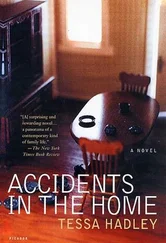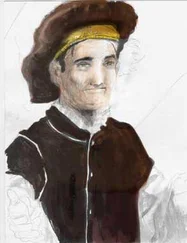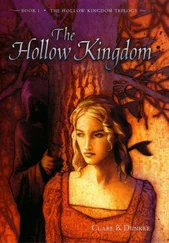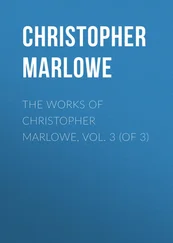The earliest large-scale Ordnance Surveymap has it as Shonk’s Moat (in the gothic typeface reserved for antiquities) and clearly shows a double moat arrangement forming two islands. By 1905, when the archaeological society visited, a fishpond remained, and the arms of the moat were mostly dry. The only clues that there had once been a building were the traces of foundations, which still dimpled the turf.
A photograph, perhaps taken earlier that day, shows William Gerishstanding behind the Brent Pelham stocks and whipping post, looking younger than his forty-one years, his face framed by a neat dagger-shaped beard and a straw boater. A bank clerk by day, the indefatigable Mr Gerish is best characterised by pointing to his magnum opus, Monumental Inscriptions , for which he trawled the churches and graveyards of Hertfordshire recording some 70,000 inscriptions on strips of paper that he and his wife pasted into thirteen volumes in alphabetical order– a pursuit that was said to have destroyed his health and contributed to his premature death at the age of fifty-six.
Gerish was part of what became known as the nationwide folklore revival, avidly collecting local stories and publishing them in one shilling pamphlets. It was one of these that Gerish read to his fellow archaeological society members that Thursday afternoon in July 1905. It was called A Hertfordshire St George, or the story of Piers Shonks and the Pelham Dragon . While he had chosen for his stage the countryside where Shonks once lived, Gerish’s pamphlet paid greater attention to the home of his adversary. In fact, Gerish’s chief claim to originality is his treatment of the yew tree, its felling and the dragon’s lair beneath it. He had first written about the incident in an article for Folklore three years earlier; written about a ‘terrible dragon kennelled under a yew tree which stood between what were afterwards two fields called Great and Little Pepsells’, adding the surprising news that the tree had been chopped down some years before and the dragon’s cave found in its roots. Gerish’s papers in the Hertfordshire Archives reveal the original source for this story to be a series of letters in the Hertfordshire Mercury from some fifteen years earlier. A correspondent identified only as D.E. set the ball rolling with a query published in late February 1888:
Brent Pelham: There is a man buried under the foundation on the north side of Brent Pelham Church of the name of Shonks. Can any of the readers of the Mercury give the reason why he was buried there, and also the date of the year he was buried? —D.E.
The year 1888 was a good one for enquiring about bones. On 23 January, the remains of a skeleton were discovered in a stone coffin in the eastern crypt of Canterbury Cathedral that some would claim were the lost relics of St Thomas Becket. The story broke in The Times early in February, sparking a series of letters to the editor and a controversy that has lasted to the present day. I cannot help but wonder if D.E., whoever he or she was, thought to question the identity of Shonks because of the excitement over Becket’s bones.
There were several replies: quoting the various county historians on the matter, describing the tomb and giving versions of the inscription over it. Between them, the authors of each letter managed to encompass most of the traditions: here was Shonks the Lord of the Manor who supposedly died in 1086, Shonks the giant who got the better of a rival, Shonks the dragon-slayer, and Shonks who cheated the devil. But the most interesting letter by far ran in the paper on 17 March, and came from a local vicar with a name like a hardwearing fabric; he was the alliterated Reverend Woolmore Wigram, and what he had to say would change the centuries-old folk legend for ever.
On what occasions are stories told? Is there a story-telling season? Do particular stories belong to particular occasions? For what purposes are they told? For instruction or warning, or simply for amusement?
—Charlotte Sophia Burne, The Handbook of Folk-Lore , 1914
In a letter written towards the end of his life, Reverend Woolmore Wigram recalled that the story of the dragon’s lair found under a yew tree belonged to a particular occasion in the 1860s; to one of his traditional tithe luncheons. This was the annual meeting when the parson and the farmers agreed – or more likely disagreed – on the tax due to the church. Traditionally held in Brent Pelhamon the second Friday in December, there could hardly be a more apt occasion to discuss the old stories. Titheswere part and parcel of the customs of the village. Onerous, contentious and unedifying, tithes are an entertaining way to glimpse the lives of the folk, their personalities, their world and their preoccupations.
Though familiar themes crop up everywhere, ancient tithing customs were particular to each parish. Today they read like magic potions: toad under cold stone, days and nights has forty-one , could well be the vicar’s due at Lammastide. As well as the joy of otherness and unfamiliar words to justify time spent with tithe records, they are also especially instructive for anyone chasing old stories. They challenge us to unravel them, to reveal lost ways of making sense of the world and to shed light on the long-forgotten machinations of the stock characters of village life: impecunious parsons, resentful husbandmen and bombastic squires.
Tithes were organic and multi-layered, built out of cunning millers and higglers’ horses, village personalities, stolen land, ancient disputes, forgotten farming practices and lost ways of life. While farmers and most tithe payers of the past would be delighted to know of their utter obliteration, we are right to be anxious that something has been lost with their passing, and we should treasure the traces we have left. In this they are like local legends: Piers Shonks has fought many battles but none more important than the battle between memory and forgetting.
In about 1902 Wigram wrote to Gerish, ‘I will send you another time the legend of O. Piers Shonks; as I heard it from the Inhabitants, at my Tithe Audits when the good folk used to pay their 1/6 or 2/ worth of tithe (quite punctually) and sit down to cold beef bread & cheese & conversation; and give me all the folk-lore.’
Was it simply that the luncheon was held at the Yew Tree Inn, a popular village meeting place since the middle of the previous century, and Wigram asked about village yews and one story led to another? Perhaps someone was talking about the tithes due on mature timber in the old days when his neighbour mentioned what was found under the oldest of all trees in those parts, back when Reverend Soames was vicar and busy writing his books instead of earning his tithes, back when churchwarden Morris was farming the tithes in Brent Pelham and making himself very unpopular? A story to impress or entertain the new vicar. ‘Are dragon’s eggs tithable, Reverend?’ somebody quipped.
Woolmore Wigram became vicar of both Brent and Furneux Pelham in 1864 and held the post for twelve years. In his early thirties when he arrived, Wigram was a mutton-chopped and muscular Christian, a founding member of the Alpine Club. Just two years before he arrived in the Pelhams, he had braved storms that had turned his hair white with icicles and driven frozen spicules into his face as he made the first successful ascent of the White Tooth, La Dent Blanche , near Zermatt. At over 14,000 feet, it was considered one of the hardest climbs in the Alps. How would he occupy himself in countryside that was pleasantly undulating but with no discernible peaks? Perhaps he might turn his hand to more scholarly pursuits, to folklore and local history.
Читать дальше












